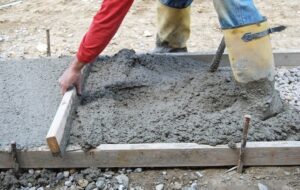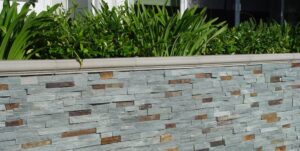Residential Concrete Contractors Dallas TX repair industry faces a lot of challenges. The expected durability of repaired structural damage is a big one.
Contractors must balance several factors, such as surface prep, selecting the right repair material, and cost. They also have to make sure that the product will adhere well.

Concrete is a tough material, but it can crack. Using the right products and techniques, you can repair small hairlines or surface cracks in concrete to keep water out and weeds out.
For small cracks less than 1/4 inch wide and surface craters, a patching compound will likely work well. For larger cracks, you’ll need to use a different technique.
Start by removing any loose debris from the cracked area. This will help the repair material bond with the existing concrete. Next, chisel the crack to expose a fresh face of concrete. The goal is to create a backward-angled cut in the concrete to prevent the crack from opening up again in the future. This step is crucial to the long-term durability of the repair.
Once the crack is prepared, apply the patching compound and smooth it with a masonry trowel. Then, if needed, feather the edges into the surrounding concrete surface to blend in the repair for a more even appearance. This will not only help the patch look smoother, but it will also seal the repair against stains.
Before a contractor buys any repair materials, they should perform a basic test on the site to see if the product will bond with the concrete they will be working with. This can be as simple as gluing a metal dolly to the concrete surface and then pulling it to see how much psi is required for a successful bond.
If the psi is too low, you’ll need to chisel out the damaged concrete and perform a more extensive prep before applying the repair. Then, contractors should purchase the best product for the job based on the factors identified during the pre-work test.
The most important factor in a successful repair is the bond strength of the new material to the concrete matrix. Many repairs fail because the new material doesn’t bond to the concrete, causing it to debond and eventually die. One way to improve the odds of a strong bond is by purchasing a repair material with very low shrinkage. This will help the repair last and withstand normal loads.
Crack stitching is used in concrete repair when tensile strength needs to be reestablished across major cracks. It involves drilling an entry and exit hole across the cracked surface, running U-shaped metal units with short legs (staples) across the crack, anchoring them firmly in the holes, and grouting them in place. This technique provides a cost-effective and efficient method of repairing concrete while maintaining the integrity of the surrounding concrete structure.
Before beginning the concrete crack repair process, it’s important to first thoroughly inspect the structure for any signs of deterioration or damage. A good tool is a hammer to strike the concrete and listen for a dull hollow sound, which indicates delamination of the concrete. This is the primary cause of concrete cracking and spalling.
Once the damage has been determined, a concrete repair specialist should be consulted to determine the best action. There are several ways to repair a concrete crack, depending on the size and severity of the damage. Some methods are more permanent than others, but all will help prevent further deterioration and extend the structure’s life.
For small cracks, patching is a simple and affordable solution. A latex-based concrete crack filler is applied with a mason’s trowel or putty knife and forced into the crack, sure to cover all areas of delamination. The product is then smoothed and allowed to cure per the manufacturer’s directions.
More serious cracks should be injected with a waterproof epoxy resin to protect the structure from water leaks. Generally, moisture-tolerant epoxy materials can inject wet cracks in dry conditions, but injection with moisture-tolerant epoxy is not recommended for damp concrete.
Another option for larger cracks is to use a polyurethane non-sag sealant. These products require acetone or other chemical solvents for cleanup, but they offer superior durability and longevity. Once the concrete crack repair has been completed, it is important to allow the materials to cure completely before opening to traffic. Depending on the type of product used, curing times can vary from a few minutes to hours.
The repair of concrete cracks requires the application of a suitable filler or sealant. Different repair materials are used depending on the type of crack and whether the crack is dormant or active. In general, the use of flexible repair materials is recommended for dormant cracks and cracks with low movement potential (fixed or static cracks).
If the crack is active and expected to move in the future, a high-pressure polyurethane injection method may be more appropriate. This can help restore tensile strength, reduce water penetration, and prevent cracks from spreading further.
It is important to evaluate the condition of a concrete structure before starting any repairs, especially on older structures. This evaluation can be done using destructive and nondestructive methods, such as radar, infrared thermography, impact-echo, or core sampling. Nondestructive testing is typically more cost-effective and allows inspecting a wide area without opening the concrete.
If structural damage is found, conventional concrete placement can be a suitable solution. However, the replacement concrete must be able to make an integral bond with the existing concrete, and this requires a low w/c and a high percentage of coarse aggregate to minimize shrinkage cracking.
To ensure that the replacement material adheres to the existing concrete, it is usually necessary to route and seal the cracks. This is a simple procedure, using a routing machine to cut a V-shaped groove into the surface of the concrete. The groove is then filled with a flexible sealant.
Before routing and sealing a crack, the contractor should thoroughly clean the crack to remove any dirt or debris. This is particularly critical for dormant cracks where the mechanical bond will be replaced with a chemical bond.
Once the crack has been routed and sealed, a slurry coating or membrane can be applied to further protect the crack from moisture and traffic impacts. This can be a great option for projects where the structure cannot be shut down for repairs, such as bridges or pavements.
When a water leak is found in concrete walls, it must be repaired as quickly as possible. Moisture leaking from concrete structures threatens the integrity of the walls and foundations and creates a breeding ground for mold spores. This type of damage can be very difficult to repair, and it’s important to seek professional advice. Concrete specialists can quickly identify the source of the leak and determine the appropriate concrete repair method to save your concrete structure from deterioration.
When you are looking for a concrete repair contractor, ensure they have experience working on similar projects to yours. They should also be able to provide you with an estimate for the work to be carried out. It is also a good idea to walk through the repair area before handing over any money so that you know what is being done and what work may still be required.
It’s also a good idea to find a contractor that uses the proper equipment and high-quality materials. The quality of these products will ensure that your concrete repair will last and look professional. Concrete repair contractors should also be able to recommend preventative maintenance strategies that will help keep your concrete structures in pristine condition for years to come.
Several different repair techniques can be used to stop a concrete leak, depending on the cause of the leak. These can include using foams, quick-setting mortars, or epoxies. The key to this type of repair is accurately locating the leak under all dirt and concrete. Professionals use various tools to pinpoint the leak, including listening equipment to hear where the copper pipe is running under the slab and tracing equipment to follow the route of the leak.
Increased concrete repair activity hurts the environment, contributing to natural resource depletion and pollution. Engineers are therefore concerned with designing eco-efficient repair systems that achieve specified performance levels in terms of strength, durability, and cost to meet sustainability demands.
